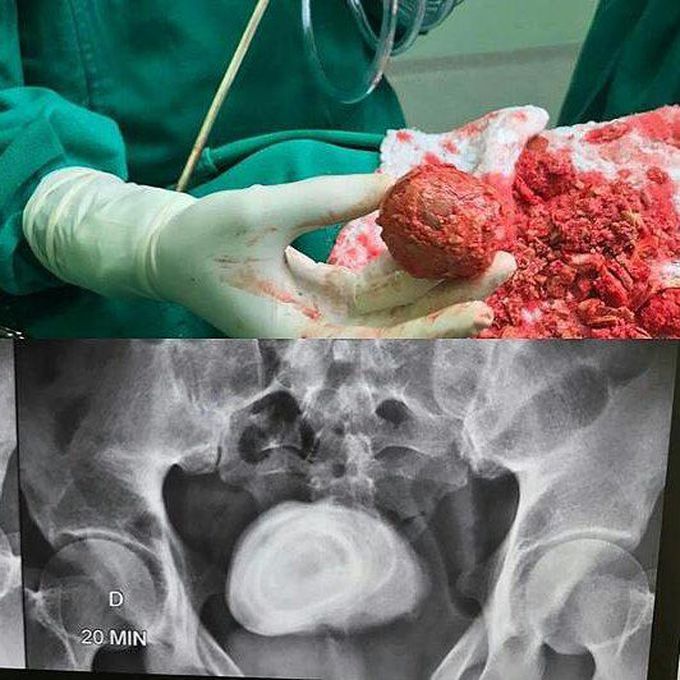


Stones stones!
One of the largest urinary bladder stones, also called vesical calculus, removed and held by the surgeon. These huge stones are caused by a buildup of minerals and occur if the bladder is not completely emptied after urination, or urinary stasis. Eventually, the leftover urine becomes concentrated and minerals within the liquid turn into crystals. Patient can experience no symptoms at all or present with suprapubic pain, dysuria (painful urination), frequency, nocturia, and urinary retention. Gross hematuria (blood in the urine) and sudden termination of voiding are extremely common. Plain radiograph (bottom photo) shows the stone due to its radiopaque properties. Ultrasound does the job just as well. In case a stone has been deemed too large to pass naturally, cystolithotomy is the surgical procedure done, which can be carried out as an open surgery or by robotic cystolithotomy that allows for a minimally invasive approach to remove the stone through much smaller incisions than the traditional approach.

